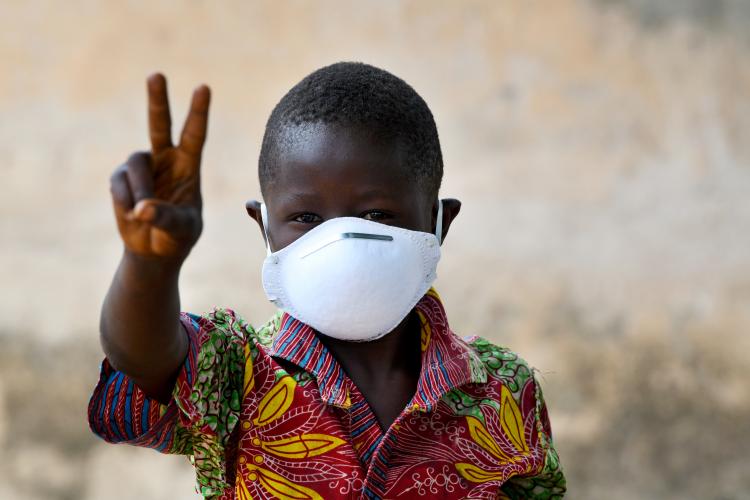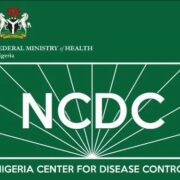WHO: Why Kids Below Five Are Not Recommended To Wear Face Masks

The World Health Organisation (WHO) has said it is not recommended for kids below five years to wear a face mask.
In a video posted on WHO Africa Region’s Twitter handle @WHOAFRO, the Technical Lead for WHO African Region, Dr. Landry Kabego, said there are specific recommendations for children because this category of individuals has certain specific features.
According to Kabego, they are in a phase of psychomotor development, but also of intense learning.
“From zero to five years of age, we do not recommend the wearing of masks because it could interfere with the psychosocial development of these children, and for this age group they have not acquired some motor autonomy in the management of the mask.
“From six to 11 years of age, we recommend the wearing of masks but under supervision, also taking into account the transmission of the virus in the community, the customs and socio-cultural factors of the community.
“Beyond 12 years of age, the guidelines for the wearing of masks are the same as of adults, and in patients with underlying diseases which do not allow them to wear masks properly, we recommend the use of face shields,”
he said.
On the guidelines for the correct use of mask, the expert said the first thing is to make sure one chooses a mask that fits, but also wash one’s hands before wearing the mass. He added:
“And when you are wearing the mask, make sure it covers your nose, mouth and chin. Don’t touch the mask once it’s on, and when you take it off, make sure you wash your hands.”
Meanwhile, a study had revealed that COVID-19 is generally a mild disease in children, including infants.
However, a small proportion will develop severe disease requiring ICU admission and prolonged ventilation, although fatal outcome is overall rare.
The multicentre cohort study published in the Lancet involved 82 participating health-care institutions across 25 European countries, using a well-established research network—the Paediatric Tuberculosis Network European Trials Group —that mainly comprises paediatric infectious diseases specialists and paediatric pulmonologist.
The study led by Florian Gotzinger included all individuals aged 18 years or younger with confirmed SARS-CoV-2 infection, detected at any anatomical site by RT-PCR, between April 1 and April 24, 2020, during the initial peak of the European COVID-19 pandemic.
READ ALSO: CDC Offers Friendly Dos And Don’ts Of Wearing Of Cloth Face Masks
The researchers explored factors associated with the need for intensive care unit admission and initiation of drug treatment for COVID-19 using univariable analysis and applied multivariable logistic regression with backwards stepwise analysis to further explore those factors significantly associated with ICU admission.
Gotzinger and his team found that 582 individuals with PCR-confirmed SARS-CoV-2 infection were included, with a median age of 5·0 years (IQR 0·5–12·0) and a sex ratio of 1·15 males per female. 145 (25 per cent) had pre-existing medical conditions. 363 (62 per cent) individuals were admitted to hospital.
“48 (8 per cent) individuals required ICU admission, 25 (4 per cent) mechanical ventilation (median duration 7 days, IQR 2–11, range 1–34), 19 (3%) inotropic support, and one (<1 per cent) extracorporeal membrane oxygenation.
“Significant risk factors for requiring ICU admission in multivariable analyses were being younger than 1 month (odds ratio 5·06, 95 per cent CI 1·72–14·87; p=0·0035), male sex (2·12, 1·06–4·21; p=0·033), pre-existing medical conditions (3·27, 1·67–6·42; p=0·0015), and presence of lower respiratory tract infection signs or symptoms at presentation (10·46, 5·16–21·23; p<0·0001),”
the researchers said.
According to them, the most frequently used drug with antiviral activity was hydroxychloroquine (40 [7 per cent] patients), followed by remdesivir (17 [3 per cent] patients), lopinavi+r-ritonavir (six [1 per cent] patients), and oseltamivir (three [1 per cent] patients).
SEE ALSO: New Experiment Shows Which Face Masks Are Best At Blocking The Deadly Coronavirus Pandemic
“Immunomodulatory medication used included corticosteroids (22 [4 percent] patients), intravenous immunoglobulin (seven [1 per cent] patients), tocilizumab (four [1 percent] patients), anakinra (three [1 per cent] patients), and siltuximab (one [<1 per cent] patient). Four children died (case-fatality rate 0·69 per cent, 95 per cent CI 0·20–1·82); at study end, the remaining 578 were alive and only 25 (4%) were still symptomatic or requiring respiratory support,”
the researchers added.
The researchers say the data reflect the current uncertainties regarding specific treatment options, highlighting that additional data on antiviral and immunomodulatory drugs are urgently needed.
They noted that the study confirms previous reports from China suggesting that the case-fatality rate of COVID-19 in children is substantially lower than in older adult patients.
“However, some children develop severe disease and require prolonged intensive care support, which should be accounted for in the planning of health-care services and allocation of resources during the ongoing pandemic.
“Finally, the findings highlight that data on antiviral and immunomodulatory drugs are urgently needed from well designed, randomised controlled trials in children, to enable paediatricians to make evidence-based decisions regarding treatment choices for children with severe COVID-19,”
the researchers said.


